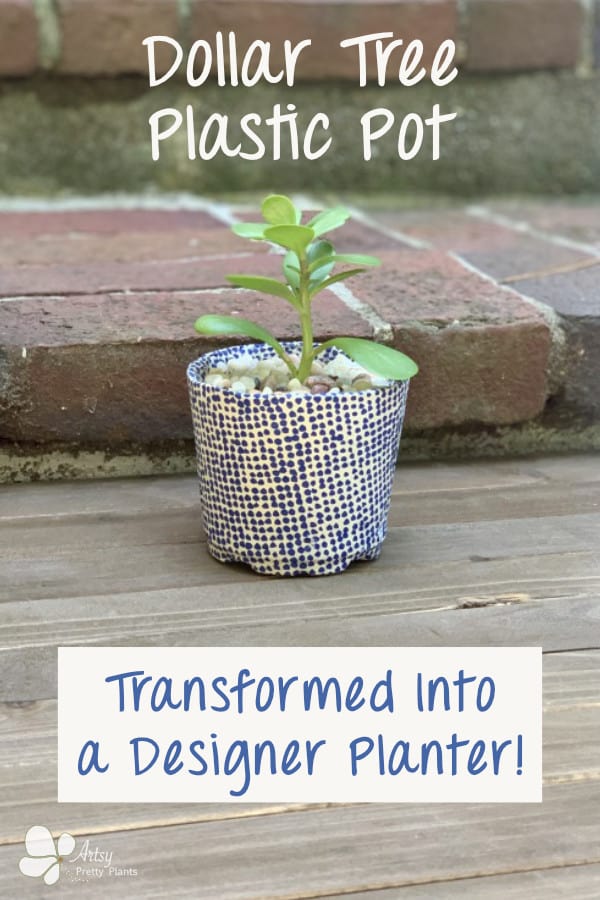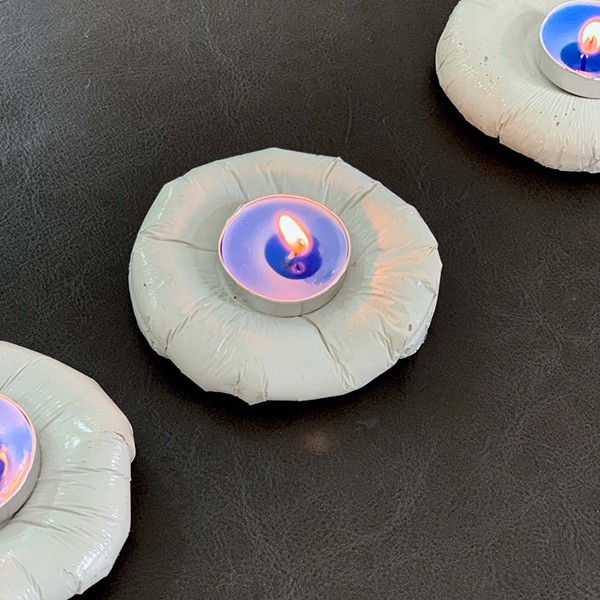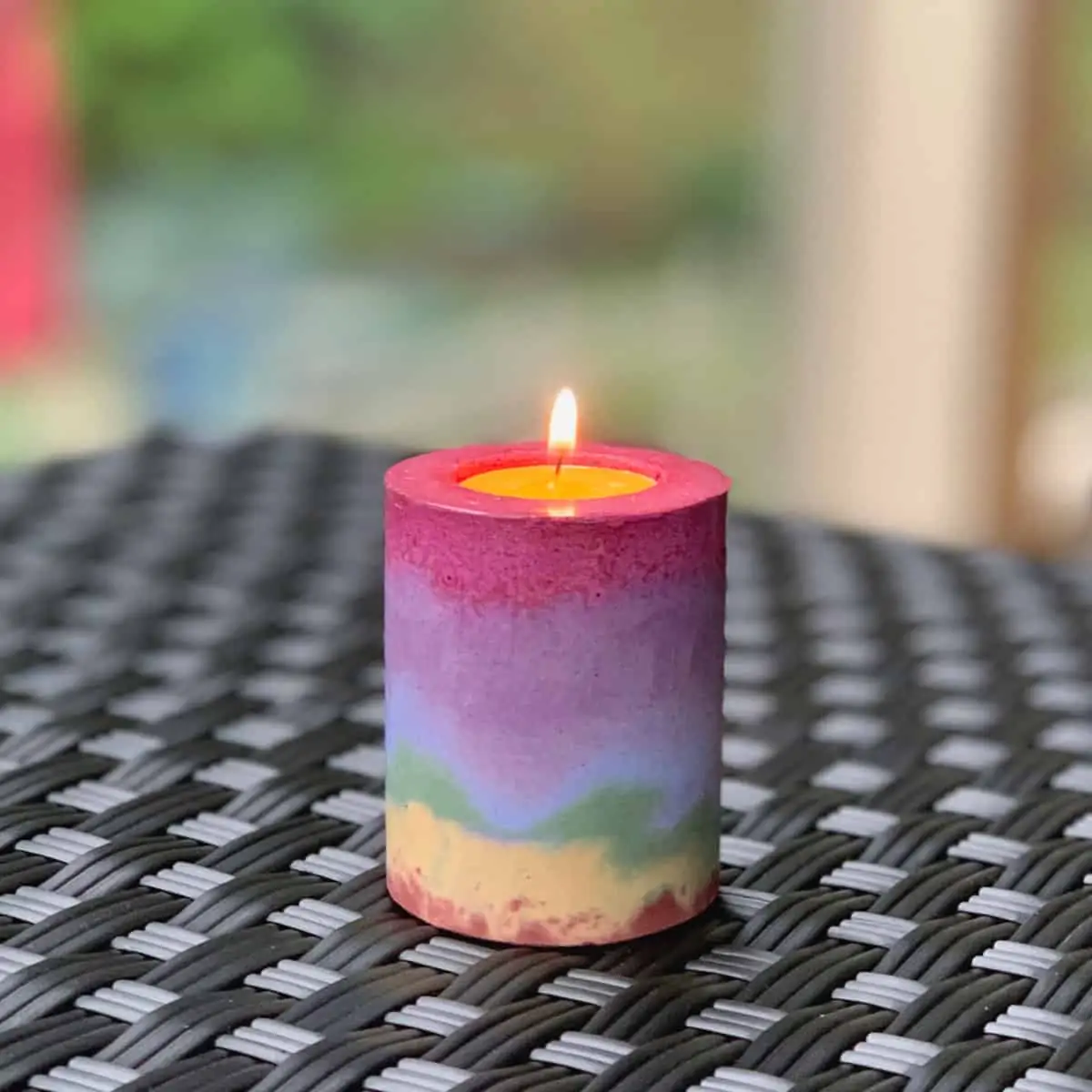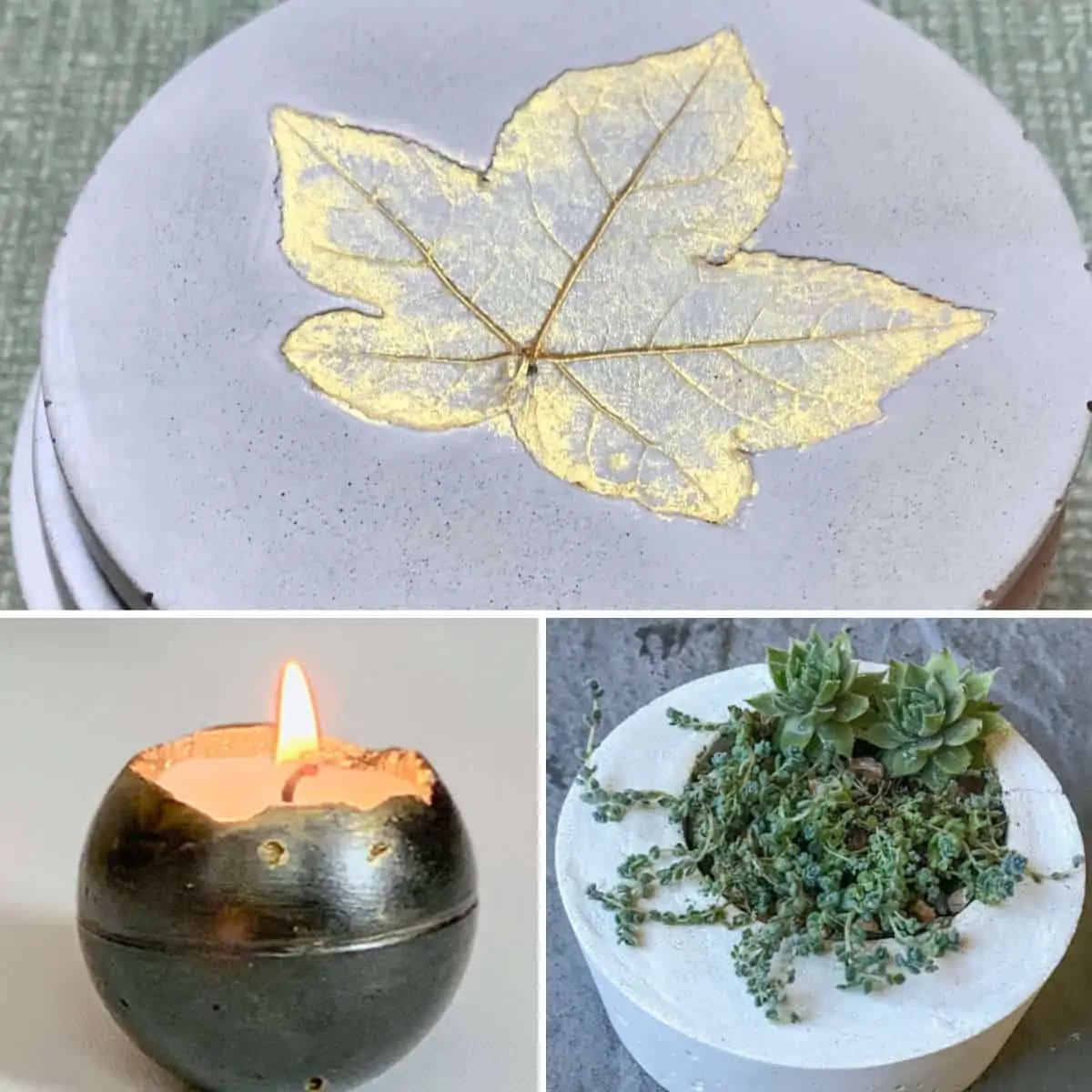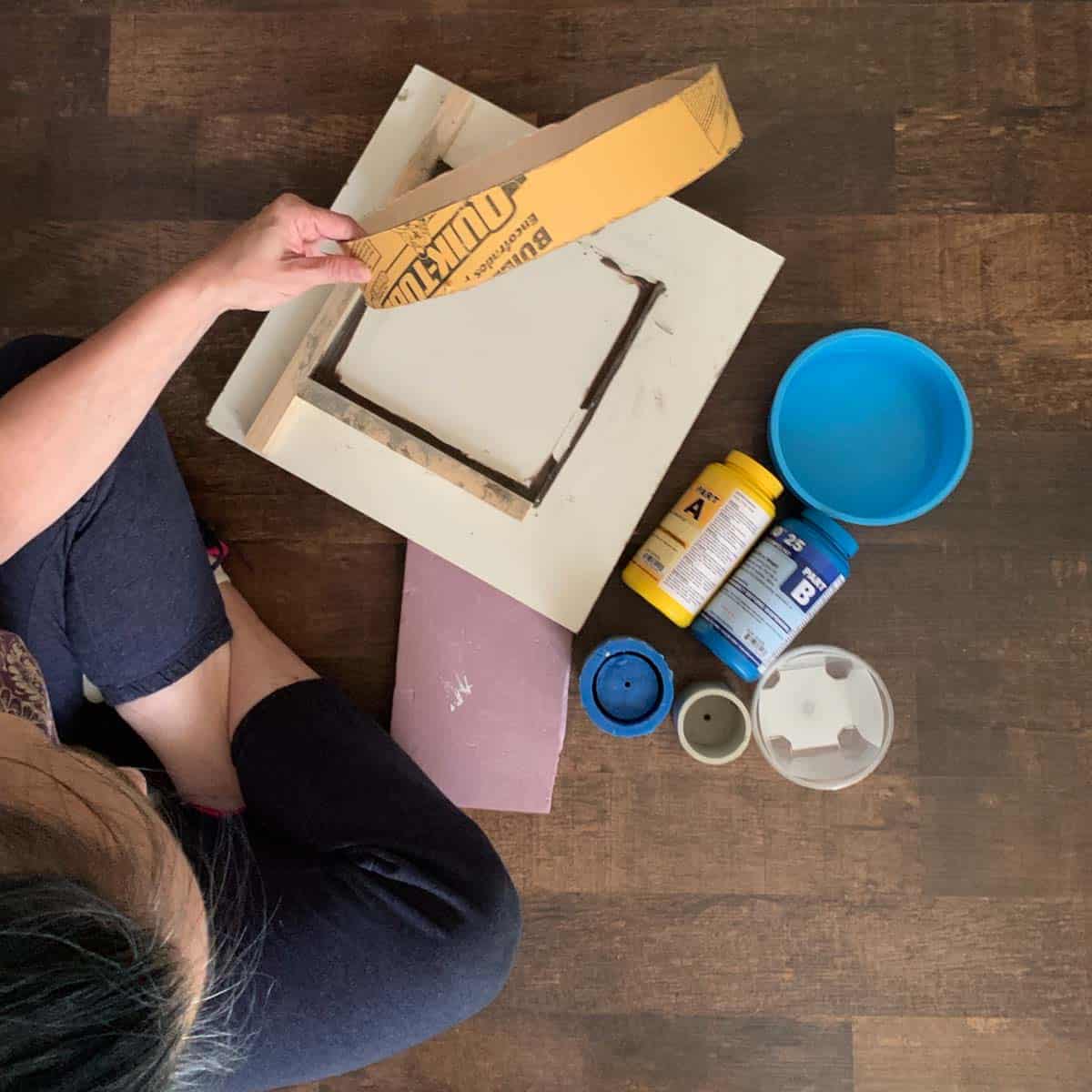Transform a Plastic Plant Pot (Into a Durable Planter!)
Here is how to save money and transform a plastic plant pot into a durable outdoor planter, just by using cement.
Spurs it up by decorating it with designer napkins that you decoupage.
Here’s the trick! Take a cheap plastic pot- you know, the ones that you take the new plant out of and throw anyway, and coat the inside with cement!
It’s easier than making a whole cement planter. This way you don’t have to look around for the perfect inner mold.

You also don’t have to worry about demolding anything. It’s so easy!
Now you might be asking, why not just keep it as a plastic planter and not use cement?
Okay, fair question. Here are the reasons I wanted to do this.
- Durability and convenience are the biggest reasons.
I don’t keep plants indoors until the dead of winter, so I need something that won’t blow over in the wind and not start cracking in the hot sun.
I’ve had this problem many times before with plastic pots and they just really aren’t practical for outdoor use. - Using a skim coat of cement allowed me to keep the smooth plastic sleeve on the exterior so I could easily apply a decoupage printed napkin to it and it should maintain its look.
I’m a few months in and so far it looks the same as it did the day I first put it outside with a potted plant.
The idea of keeping the plastic sleeve is to allow you to do a beautiful decoupage design on a cement planter that won’t peel off or turn brown.
You see, the plastic sleeve is important because it protects the designer napkin print from getting icky.
Once the soil gets wet, the minerals in the soil as well as moisture would come through if this was a typical cement planter.
There would be plenty of issues if you decoupaged the napkin right onto the cement.
Even if you seal the cement first, it’s risky. This is a great way to keep the printed napkin intact.

This allows some extra evaporation to take place. Do you see it now? The best of both worlds! ;0}
If you love using Dollar Tree items to make things, then you should check out this list of 70+ fall crafts and decor from Dollar Tree and 90+ Christmas crafts you can make.
And for inspiration for dressing up painted clay pots, here are 50 tutorial ideas.
Some of the links on this page have been provided as a convenience for finding materials. These links may also be affiliate links. As an Amazon Associate I earn from qualifying purchases, at no extra cost to you.
I only recommend products I’ve used and loved, unless otherwise stated. Click here to read my full disclosure policy.
DIY Difficulty Level | Easy
Materials For Transforming A Plastic Plant Pot Into A Durable Cement Planter
- Rapid setting cement
- Disposable bowl
- Disposable cup
- Durable nitrile gloves– I like these because they are so durable, you can rinse and reuse- costing less in the long run
- Safety glasses
- Drinking straw
- Hot glue gun
- Scissors
- X-acto knife
- Dollar tree disposable plastic pot- 6″
- Mod Podge
- Decorative paper napkins- the blue dotted one I used is here, but if you find one that is “guest towel” size, then you will only need one because it will wrap the full way around the container. The cocktail ones are too small and require two of them.
- Foam brush
- Spray paint for plastic- matte white
- Urethane spray-acrylic
Note: My planter has not undergone the test of time yet, so I can’t say with certainty that the decoupage will endure.
If this worries you, you may want to keep this planter on a covered porch or use it inside. I will report back after a couple of months of outdoor exposure.
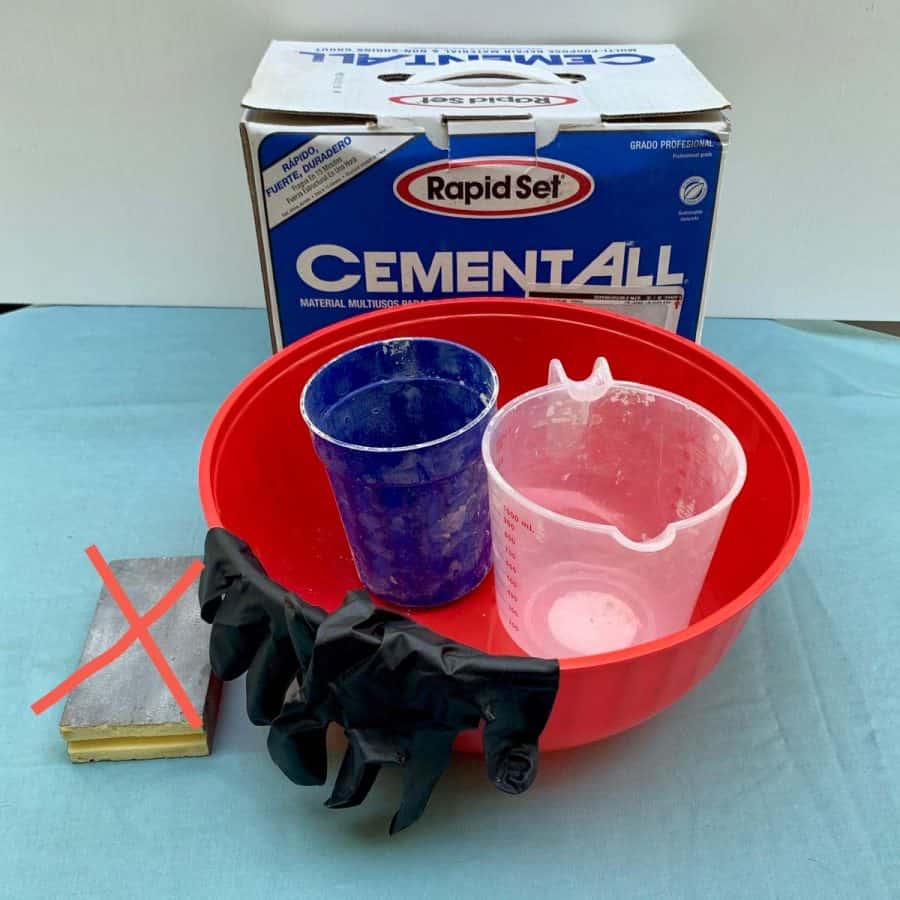
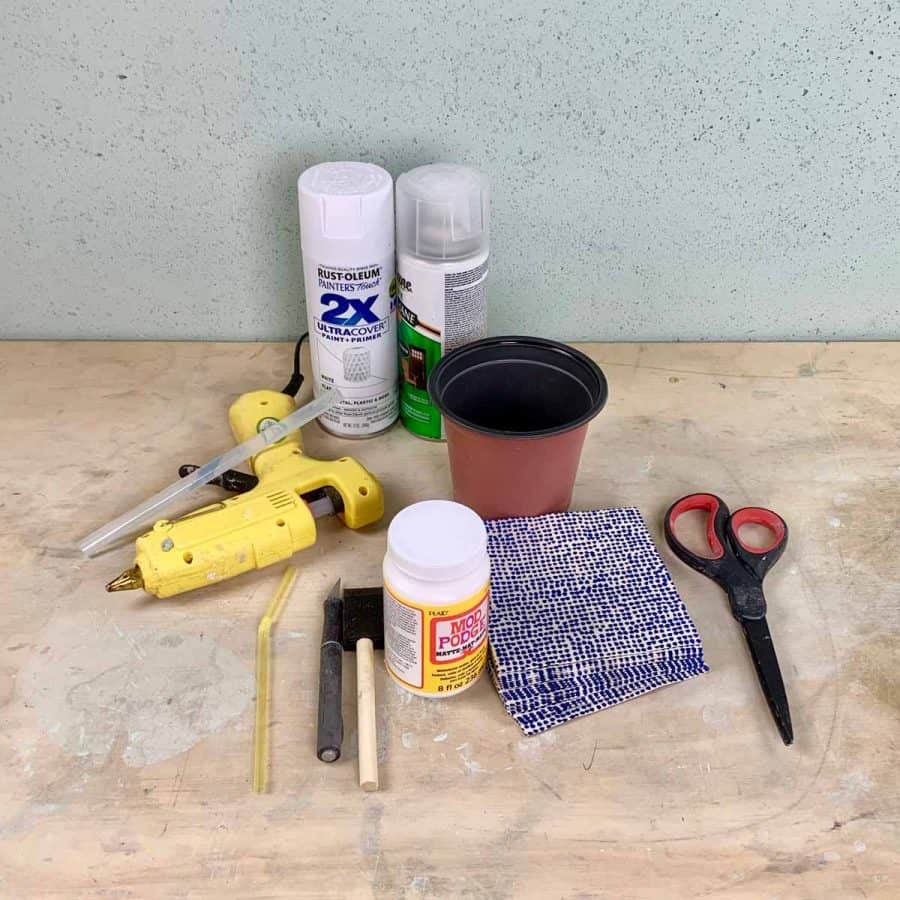
Tutorial Steps For Transforming A Plastic Plant Pot Into A Durable Cement Planter
Step 1. Trim The Plastic Pot


When you go to add the decoupage napkins, it will look nicer if you have a clean straight edge.
So rather than the beveled lip, so trim the lip off the top of the plastic pot using an X-acto knife.
Step 2. Create Planter Drainage Holes
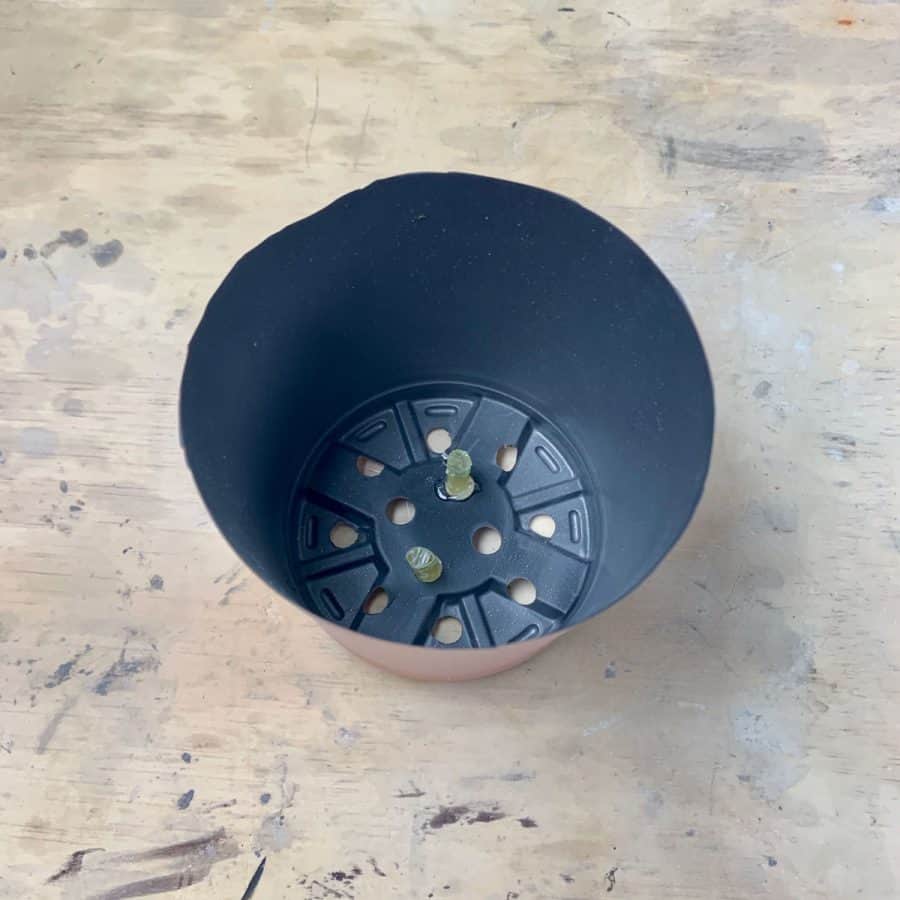
Heat the glue gun and cut 2 pieces of straw, each about an inch long. Glue both ends and stick through the holes and glue in place.
Be sure to have at least ¾” coming up into the planter.
Step 3. Prep The Cement

To learn more about making things with cement, check out the Making Concrete Crafts Techniques article.
Mix the cement to a moldable consistency. It should be fairly thick, like dough.
Step 4. Mold The Cement
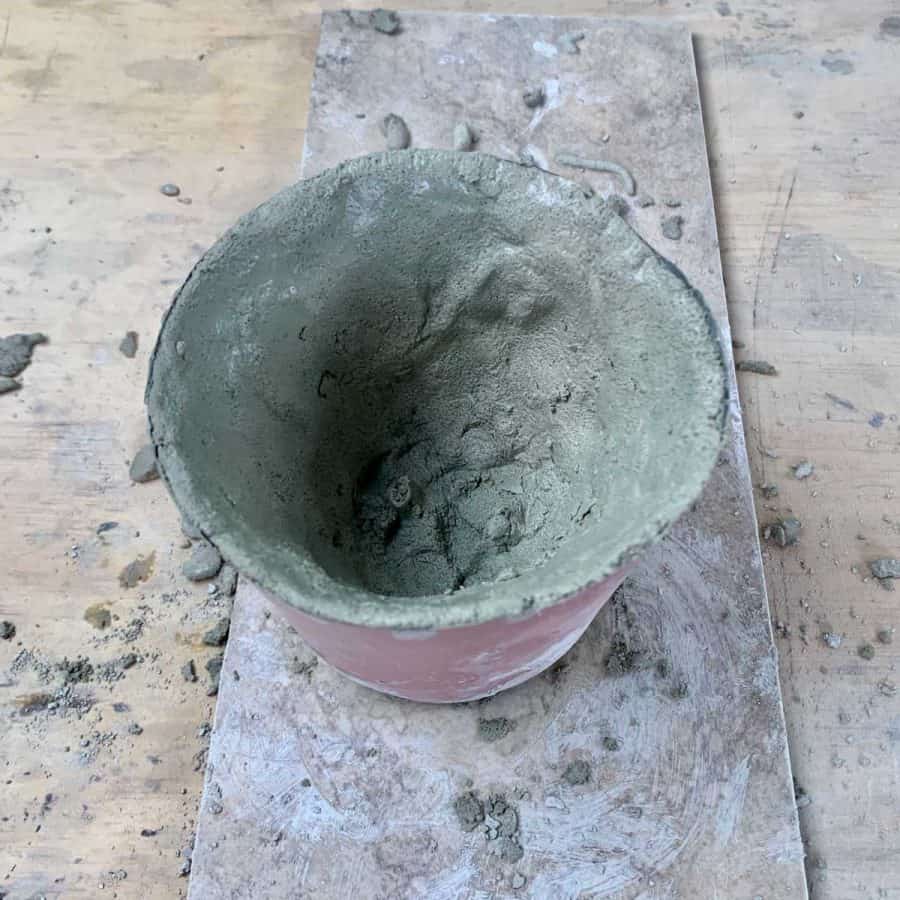
Apply the cement to the sides of the container and the bottom.
The bottom should be about ¼” thick- take care to not cover up the straws. Now push the cement around the inside edges.
These pots are made from a very flimsy plastic that is almost paper-like making it difficult to mold the walls.
So hold one hand on the outside in the same place you are applying the cement on the inside to provide some rigidity as you apply.
Build the walls up to about ¼” thick. It probably took me about 20 minutes to get a sufficient build up.
As you work with it, this rapid setting cement will begin to set which will make it easier to work with after the first 10 minutes or so.
The planter walls don’t need to be perfectly even since the inside won’t be seen. Let this cure for about an hour, depending on climate conditions.
Step 5. Demold The Drainage Straws And Plastic Pot Bottom

To make this planter function better for plants, you will want to trim off the bottom.
This will allow the moisture in the soil to evaporate, keeping a better environment for your plant.
This is especially true if it’s a succulent, who prefers a dry environment.

First, start by removing the drainage straws. Pliers will work best for this.
Next, use the X-acto and make a slit around the planter where it starts to bevel in.
You should be able to peel away the plastic.
Step 6. Prep The Plastic Pot For The Decoupage Napkins
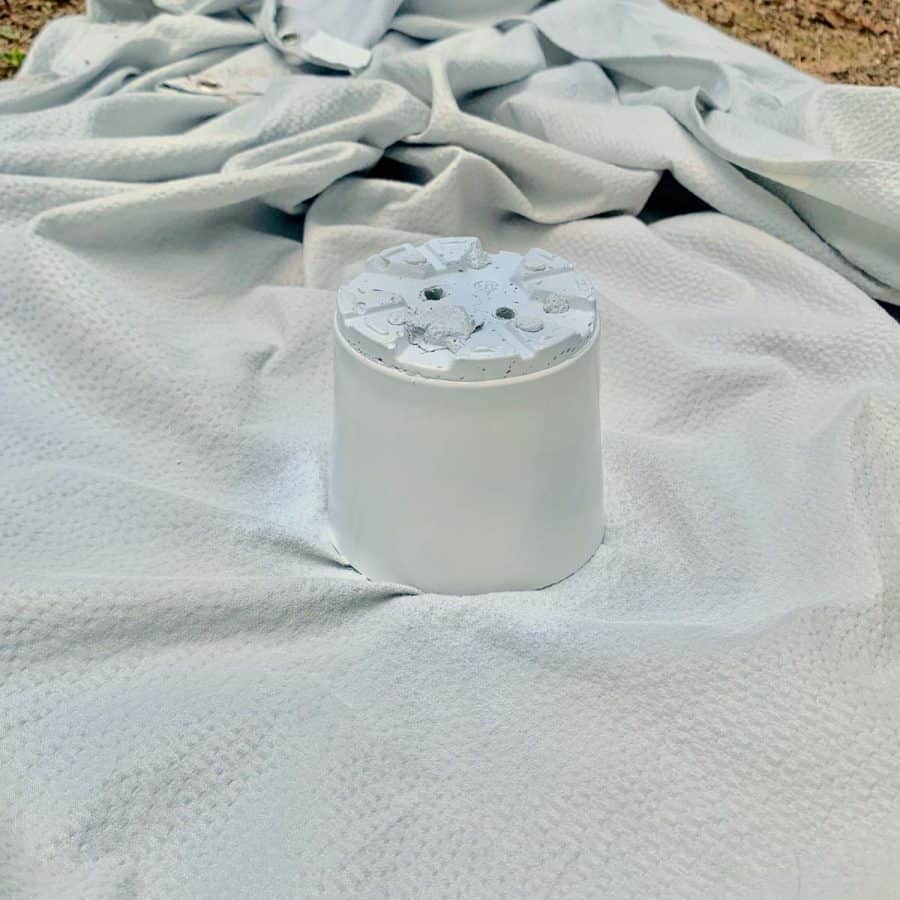
Next, prime the plastic with a base coat of paint. Follow the manufacturer’s instructions on the can and spray the pot.
Let this dry completely before moving on to the next step. I waited until the next day to be safe.
Step 7. Decoupage Printed Napkins Onto The Plastic Pot

Now you can decoupage the outside of the cement/plastic pot.
First, open the napkin so it is full size, then test where you place it on the planter and check to see if it covers the whole way around the container.
If it does, then you will be able to cover the pot without adding a second piece like I needed to, since I only used cocktail sized napkins.
You can position the printed napkin any way you’d like.
I wanted mine to run over the top and a few inches down inside so that you would see the pattern until where it hits the soil.
I also tucked mine underneath the bottom.
Once you have made a mental note of how it will be placed, peel away the white backing from the napkin.
Some napkins have one layer, some two.
Often if there are two layers, they both come off together when separating from the printed layer.

Lay the napkin on your table with the non-printed side facing you and in the direction you will have it placed on the planter.
Apply the Mod Podge in an even coat on one side of the container. Some people apply this directly to the napkin, but I find it much easier to apply to the pot.
Don’t apply the Mod Podge to the whole pot because the glue will dry too quickly. Be sure to apply the glue evenly and lightly.
Now, starting at one end of the napkin, lay the pot on top of it and roll it slowly.
Smooth the napkin with your fingers as you go.
When you get to where there isn’t any glue, stop and apply the Mod Podge to the rest of the pot.
Continue pressing the napkin around the pot until you reach the beginning again.
You’ll have a seam to deal with and the easiest way I found to finish it is to trim the napkin so that it goes about ¼” past the seam.
Then very carefully tear the ends. This will look more natural than making a straight cut.
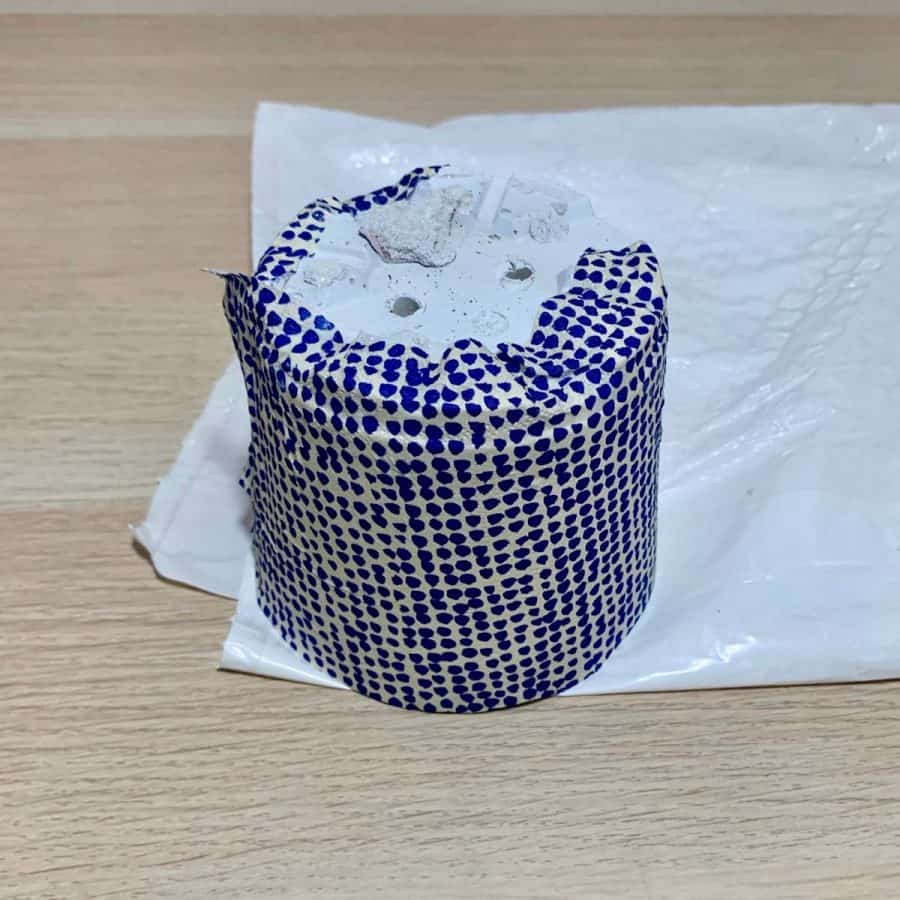
If you have wrinkles or bubbles, use the water sprayer to spray a light mist over those areas and gently smooth it with your fingers.
Here’s an article from Semigloss Design, that goes more into depth with decoupage troubleshooting.
If this was your first time trying decoupage and it didn’t turn out the way you wanted, you can redo this part.
Just grab a second plastic pot (they should have come in a pack of 4) and trim off the bottom and top lip, then spray the base coat and try it again.
Step 8. Apply Protective Coating To The Transformed Plastic Pot
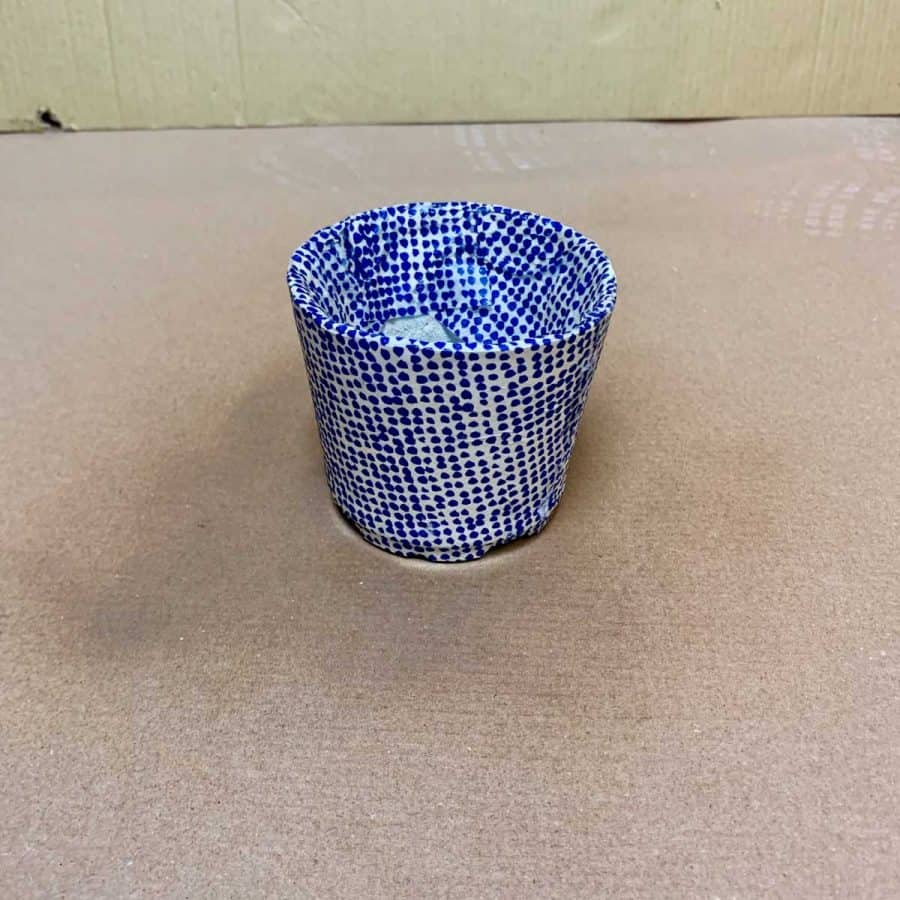
To make this plastic/cement planter durable enough to be outdoors, add a protective layer to it with the urethane spray.
I recommend applying two coats if this planter will be fully exposed to rain.
Take a look at all these other planter ideas!
Don’t forget to Pin it for later!

